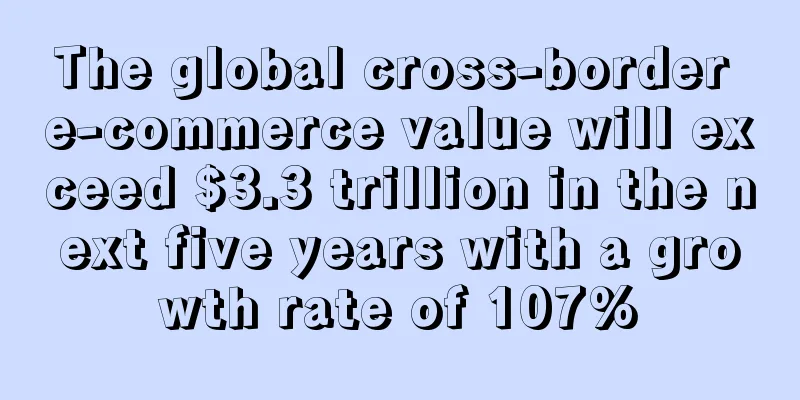The global cross-border e-commerce value will exceed $3.3 trillion in the next five years with a growth rate of 107%

|
According to a new study by Juniper Research, the value of global cross-border e-commerce is expected to be $2.1 trillion this year. This figure is expected to grow 107% over the next five years, exceeding $3.3 trillion by 2028, accounting for 33% of global e-commerce spending.
Researchers attribute this growth to rising disposable incomes in developing markets , which has prompted retailers and the entire e-commerce industry to turn to cross-border business. During this period, cross-border transactions in Brazil are expected to grow by 48%.
An interesting phenomenon is that alternative payment methods such as mobile payments are becoming increasingly popular in developing markets, which is prompting cross-border e-commerce to use these payment methods to meet consumer demand, otherwise there is a risk of losing market share to competitors.
Cross-border e-commerce is becoming a global trend. The growth of the e-commerce payment market mainly comes from the international field, thanks to the rapid expansion of major markets and their differentiation.
For example, Brazilian financial firm Nubank and payments company EBANX recently formed a partnership to optimize cross-border trade. Online platform JD.com offers users fast delivery times thanks to its strong logistics network, while AliExpress offers lower-priced products to make up for the longer delivery time.
The differences between Amazon, Rakuten and Mercado Livre lie in value-added services such as streaming and integrated financial services. Therefore, the researchers suggest that platforms must provide differentiated consumer experiences to succeed and add value to merchants.
The study also showed that cross-border e-commerce marketers should pay attention to social media. In an advertising market increasingly dominated by social media, large suppliers actually market directly to consumers.
Therefore, whether or not to attract digital consumers has become the strategic core of business competition. It is very important to correctly identify and learn the social media and digital advertising channels in each market, otherwise there is a risk of losing those consumers with rich purchasing experience.
Additionally, Nuvei’s research found that Brazil holds a 72% market share in cross-border e-commerce between Latin America and Europe, and Europe’s share of Latin American cross-border e-commerce is expected to reach $1 billion (2%) by the end of this year. Cross-border e-commerce market increase |
<<: I make 20,000 RMB a month from live streaming on TikTok
>>: Profits dropped to zero, Amazon sellers were forced to quit
Recommend
The track where Anker failed, the big guys received tens of millions of financing
Lawn mowing robots are becoming a rigid demand am...
What is Yiwei? Yiwei Review, Features
Yiwei (Shenzhen Yiwei Intellectual Property Co., ...
What is guevaralux? guevaralux Review, Features
guevaralux is an online website that focuses on de...
What is EasyEuro? EasyEuro Review, Features
Founded in 2017, EasyEuro currently focuses on pro...
Yangmatou received hundreds of millions of yuan in D+ round financing, and the import platform demonstrated its fighting skills in the red ocean
It is reported that the cross-border e-commerce i...
Offline sales fell 70%, and retailer Atlantis Seafood turned to online sales
The outbreak means consumers are shopping online ...
What is Colis Privé? Colis Privé Review, Features
Colis Privé is an expert in logistics, providing ...
What is Acos007? Acos007 Review, Features
Acos007 is an Amazon advertising operation softwar...
What is Coupons? Coupons Review, Features
Coupons is a new feature launched by Amazon, simi...
What is Triomega(トリオメガ)? Triomega(トリオメガ) Review, Features
Triomega (トリオメガ) is a service that supports Amazo...
What is RFI? RFI Review, Features
RFI=Request For Information is a project manageme...
What is SHAREit? SHAREit Review, Features
SHAREit is a global Internet technology company fo...
What is Unai Testing? Unai Testing Review, Features
Established in 2012, Younai Testing is an independ...
What is Feiyang International Logistics Group? Feiyang International Logistics Group Review, Features
Feiyang International Logistics Group was founded ...
What is Mada? Mada Review, Features
Mada (The Mada debit card) is similar to UnionPay...









